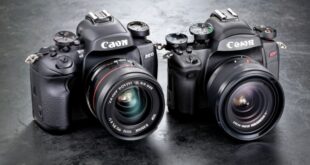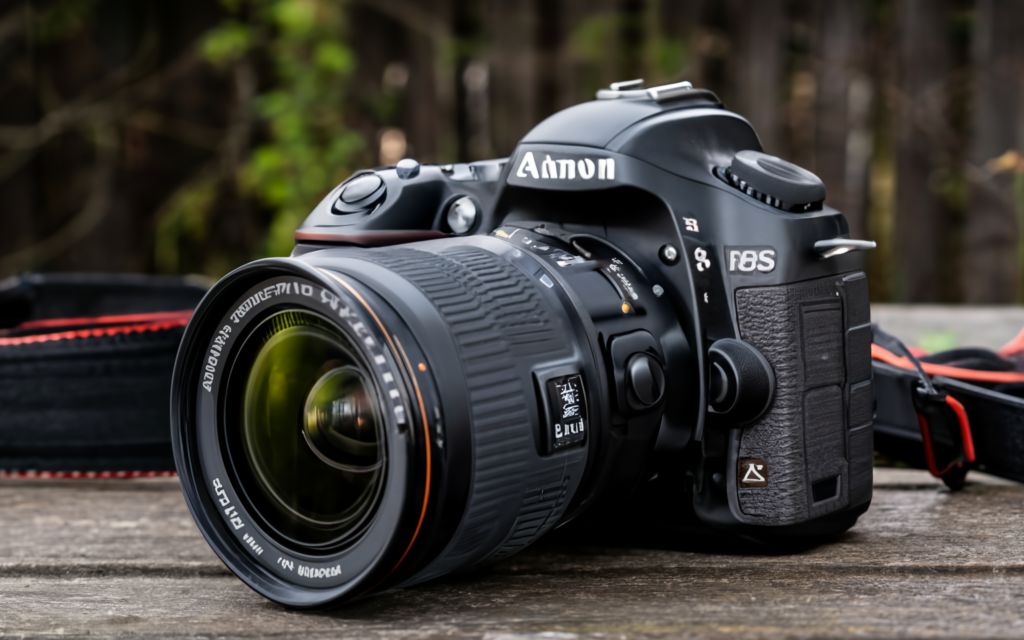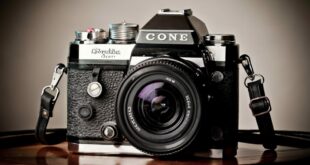Introduction
Hello everyone, and welcome to this comprehensive guide on camera DSLR or mirrorless options. In today’s digital age, capturing precious moments has become an integral part of our lives. Whether you are a professional photographer, a passionate hobbyist, or someone who simply loves taking pictures, having the right camera is essential to achieving stunning results. In this article, we will explore the advantages and disadvantages of DSLR and mirrorless cameras, helping you make an informed decision on your next capture companion. So, let’s dive in!
Advantages of Camera DSLR or Mirrorless
1. Image Quality 📷
The primary purpose of any camera is to capture moments with exceptional image quality. Both DSLR and mirrorless cameras excel in this aspect, but with different technology. DSLR cameras use a traditional optical viewfinder and a mirror to reflect the image to your eye. This allows for precise framing and autofocus, resulting in sharp and accurate images.
On the other hand, mirrorless cameras utilize an electronic viewfinder, which directly displays what the camera sensor sees. This offers real-time previews, ensuring you have a clear understanding of the final image. Additionally, mirrorless cameras often have higher resolution sensors, enhancing overall image quality.
2. Size and Portability 🎒
When it comes to size and portability, mirrorless cameras have the upper hand. Without the need for a bulky mechanical mirror system, mirrorless cameras are significantly smaller and lighter compared to their DSLR counterparts. This makes them ideal for photographers who are always on the go or those looking for a more compact setup.
However, it is worth noting that DSLR cameras have a robust and sturdy build, which can be advantageous in certain situations, especially for professional photographers who require durability and weather-sealing.
3. Autofocus and Speed ⚡
Fast and accurate autofocus is crucial for capturing fleeting moments and action-packed scenes. DSLR cameras have historically been renowned for their advanced autofocus systems, thanks to their dedicated phase-detection autofocus sensors. This makes them superior in tracking moving subjects, making them popular among sports and wildlife photographers.
However, mirrorless cameras have made significant advancements in autofocus technology. Many modern mirrorless cameras now feature sophisticated hybrid autofocus systems, combining phase-detection and contrast-detection autofocus. These advancements have narrowed the gap in autofocus capabilities between DSLR and mirrorless cameras.
4. Lens Selection 🌄
One of the key considerations for any photographer is the availability and diversity of lenses. DSLR cameras have been around for a long time, resulting in a vast collection of lenses from various manufacturers. This extensive lens selection provides photographers with numerous options to suit their specific needs and creative vision.
While mirrorless cameras have a relatively shorter history, the lens ecosystem is rapidly growing. Major camera manufacturers have been expanding their lens lineups, ensuring that mirrorless users have access to a diverse range of high-quality lenses. Additionally, with the help of adapters, many DSLR lenses can be used on mirrorless cameras, further expanding the options available.
5. Electronic Viewfinder and Real-Time Feedback 📟
One of the distinctive features of mirrorless cameras is the electronic viewfinder (EVF). Unlike traditional optical viewfinders found in DSLR cameras, the EVF presents a digital representation of the scene. This offers several advantages, including real-time exposure, white balance, and depth-of-field previews.
Additionally, the EVF allows for accurate manual focusing by providing focus peaking and magnification aids. This is particularly beneficial for macro photography and situations where precise focusing is crucial.
6. Silent Shooting 🔇
For photographers working in sensitive environments such as weddings or wildlife photography, having a silent shooting mode is a significant advantage. Mirrorless cameras, by design, do not have a mechanical mirror system that causes the distinctive sound of a DSLR camera. This silent shooting mode allows photographers to capture moments discreetly without disturbing the ambiance.
7. Video Capabilities 🎥
With the increasing popularity of video content creation, having capable video features is a must for many photographers. Both DSLR and mirrorless cameras offer excellent video capabilities, allowing you to capture high-definition footage with ease.
Mirrorless cameras have gained an edge in this department, with many models offering advanced video features such as 4K recording, high-speed frame rates, and superior autofocus during video shooting. The absence of a mirror also enables continuous autofocus in video mode, resulting in smooth and seamless tracking of subjects.
Disadvantages of Camera DSLR or Mirrorless
1. Battery Life ⚡🔋
One of the main concerns with mirrorless cameras is their battery life. The electronic viewfinder, continuous sensor operation, and other features put additional strain on the battery, resulting in shorter battery life compared to DSLR cameras. However, with technological advancements, battery performance has improved significantly in recent mirrorless models.
2. Lens Selection and Availability 🌄🔎
While mirrorless cameras are catching up in terms of lens selection, they still have a narrower range compared to DSLR systems. DSLR cameras benefit from decades of lens development, resulting in an extensive collection of lenses suitable for various genres of photography. Mirrorless camera users might find some niche lenses or less common focal lengths in limited supply.
3. Durability and Weather-Sealing 🌧️🔧
DSLR cameras are renowned for their robust build quality, making them better suited for harsh shooting conditions. Dust, moisture, and extreme temperatures can pose a challenge for mirrorless cameras, which are generally more compact and lighter. However, many mirrorless models now come with weather-sealing, providing improved protection against the elements.
4. Autofocus Performance in Certain Conditions ⏱️🎯
While mirrorless cameras have made remarkable progress in autofocus technology, they may still face challenges in certain conditions. For example, DSLR cameras generally perform better in low-light situations, thanks to their dedicated phase-detection autofocus sensors. Additionally, fast-moving subjects might be more challenging to track with a mirrorless camera, although improvements have been made in this area.
5. Electronic Viewfinder and Battery Consumption 📟🔋
While the electronic viewfinder is an advantage of mirrorless cameras, it can also be a drawback for some photographers. The EVF consumes battery power, affecting the overall battery life. Some photographers prefer the optical viewfinder of DSLR cameras, as it does not rely on battery power and provides a natural and lag-free viewing experience.
6. Availability of Accessories and Third-Party Support 🔌💡
With DSLR systems being established for a longer time, there is a wider range of accessories available, including external flashes, battery grips, and remote shutter releases. While mirrorless cameras have gained popularity, the availability and variety of accessories might still be limited in comparison. However, the accessory market for mirrorless cameras is continually expanding as their popularity grows.
7. Initial Cost and Investment 💰💡
When comparing DSLR and mirrorless cameras, the upfront cost can be a significant factor. DSLR cameras, especially older models, might be more affordable due to market saturation and the availability of used equipment. However, mirrorless cameras offer the advantage of being equipped with the latest technology and innovations, which may justify the higher price for many photographers.
A Complete Overview of Camera DSLR or Mirrorless
| Camera Type | Advantages | Disadvantages |
|---|---|---|
| DSLR |
|
|
| Mirrorless |
|
|
Frequently Asked Questions (FAQ)
1. Are DSLR cameras better than mirrorless cameras?
Answer: Both DSLR and mirrorless cameras have their strengths and weaknesses. It ultimately depends on your specific needs and shooting style.
2. Can I use DSLR lenses on a mirrorless camera?
Answer: Yes, with the help of adapters, many DSLR lenses can be used on mirrorless cameras, expanding your lens options.
3. Which camera type is better for beginners?
Answer: Mirrorless cameras are often recommended for beginners due to their user-friendly interfaces, compact size, and excellent image quality.
4. Do mirrorless cameras have a smaller sensor?
Answer: Not necessarily. Mirrorless cameras are available with various sensor sizes, including full-frame, APS-C, and micro four-thirds.
5. Do DSLR cameras have better battery life?
Answer: In general, DSLR cameras offer better battery life compared to mirrorless cameras. However, advancements in mirrorless camera technology have significantly improved battery performance.
6. Are mirrorless cameras more expensive?
Answer: Mirrorless cameras often have a higher upfront cost compared to DSLR cameras. However, they come equipped with the latest technology and innovations, justifying the investment for many photographers.
7. Can mirrorless cameras capture fast-moving subjects?
Answer: Yes, mirrorless cameras have made significant advancements in autofocus technology, allowing for accurate tracking of fast-moving subjects.
8. Are DSLR cameras better for professional photography?
Answer: DSLR cameras are widely used by professional photographers due to their robust build, extensive lens selection, and advanced autofocus capabilities.
9. Do mirrorless cameras have a lag in the electronic viewfinder?
Answer: Modern mirrorless cameras have minimized viewfinder lag, offering a smooth and responsive shooting experience.
10. Are mirrorless cameras more suitable for video recording?
Answer: Mirrorless cameras generally offer more advanced video capabilities, including 4K recording, high-speed frame rates, and continuous autofocus during video shooting.
11. Can I use my DSLR lenses on a mirrorless camera without losing image quality?
Answer: With the use of adapters, you can use DSLR lenses on mirrorless cameras without significant loss of image quality. However, autofocus performance may vary.
12. Are mirrorless cameras more fragile than DSLR cameras?
Answer: Mirrorless cameras are generally more compact and lighter, which might lead to concerns about durability. However, many modern mirrorless models come with weather-sealing for improved protection against the elements.
13. Are there specific photography genres where DSLR or mirrorless cameras excel?
Answer: Both DSLR and mirrorless cameras are suitable for various photography genres. DSLR cameras excel in fast-action and sports photography, while mirrorless cameras are favored for their portability and video capabilities.
Conclusion
After exploring the advantages and disadvantages of camera DSLR or mirrorless options, the choice ultimately comes down to your specific requirements and shooting preferences. Whether you prioritize image quality, portability, lens selection, or video capabilities, both camera types offer compelling features to suit your needs. Remember to consider factors such as autofocus performance, battery life, and investment cost when making your decision.
Now that you are equipped with an in-depth understanding of DSLR and mirrorless cameras, it’s time to take action and explore the vast world of photography. Grab your chosen camera, unleash your creativity, and capture unforgettable moments with confidence!
Disclaimer
The information provided in this article is based on extensive research and analysis from various reputable sources. However, it is important to note that individual experiences and preferences may vary. We recommend conducting further research and seeking professional advice before making any purchase decisions. The authors and publishers of this article hold no responsibility for any inaccuracies or consequences arising from the use of the information provided.



